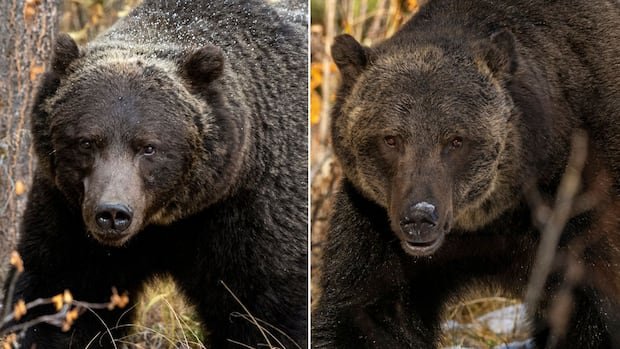Listen to this article
4 minutes estimated
The audio version of this article is generated using text-to-speech, a technology based on artificial intelligence.
Jason Leo Bantle has witnessed Banff’s grizzly bear hierarchy firsthand.
He’s been documenting bear number 122, better known as The Boss, for a decade, during which he’s watched the famous grizzly bear firmly establish himself as the Bow Valley’s most infamous brute.
“My experience with The Boss in general, over these 10 years, has been of a bear that has become more comfortable with humans, more comfortable with its landscape and its abilities to navigate situations that are quite complex,” he said.
The Chief is believed to be in his mid-twenties, making him quite old by wild grizzly bear standards. It is estimated to weigh between 650 and 700 pounds.

As far as Bow Valley Bears go, he has an impressive resume, including survive being hit by a train and closed a popular Banff trail when observed eating a black bear there.
“It has a territory of more than 2,500 square kilometers,” Bantle said. “This bear has a story and, well, he’s a grandfather now. Can you imagine? He could sit down with his grandchildren and have conversations that would be inspiring to all of us.”
But while The Boss is still at the top of the Bow Valley bear hierarchy, he has competition, largely in the form of bear no. 136.
“Split Lip is now in Chief’s territory,” Bantle said. “Seeing Split Lip two or three years ago was unusual.”

Bantle remembers running into Split Lip last month, just a few days after seeing The Boss nearby. He said Split Lip sightings have occurred more frequently in the Bow Valley in recent years.
“I and other people are having a lot more experiences with Split Lip in areas where normally only The Boss was seen,” Bantle said.
“That’s indicative that Split Lip is moving into The Boss’ territory, and The Boss is having dominance fights with Split Lip, and those dominance fights are maybe now sometimes in Split Lip’s favor.”
It’s a wildlife photographer’s dream to see a showdown between two of Banff’s most famous grizzly bears (from a safe distance, of course!).
Bantle said the recent facial scars he saw on The Boss are a sign he’s been facing competition.
“Some of these other bears are taking risks, or they think they can beat The Boss and they’re willing to fight The Boss, and their defense isn’t as strong,” Bantle said.

If The Boss starts avoiding fights he feels he’s less likely to win and starts giving up territory, it could signal to the bears that he’s no longer the best choice for mating, Bantle said, and that would make it harder for him to remain Bow Valley’s top brute.
“And little by little he will stay in his territory, but he will not have all the luxuries that he has had up to this point, of being that dominant bear,” Bantle said.
Bears are still seen before hibernation
Bantle’s recent photographs of Split Lip in a snow-covered landscape are a reminder that some bears have not yet entered hibernation.
Nick de Ruyter, director of the BioSphere Institute’s WildSmart program, said that while it is hibernation season for most bears in the Bow Valley, some remain active and awake. well into the winter months.

Bear activity this time of year depends on environmental factors, including weather, temperature, and food availability.
“Based on the good berry harvest we had this summer, I think many of the bears will return to their dens fat, happy and healthy,” de Ruyter said.
but while bear activity seems to have decreased, de Ruyter said carrying bear spray year-round is the best way for hikers and cross-country skiers to stay safe in case they encounter a bear or other predators like wolves, coyotes and mountain lions.









